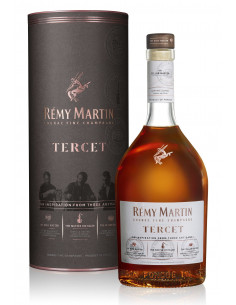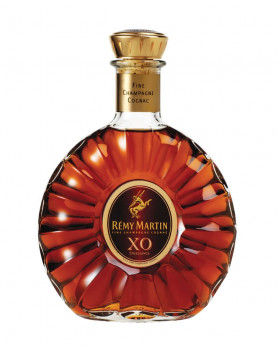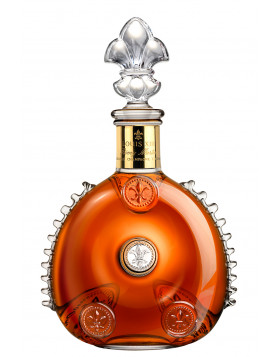I, Max, recently had the pleasure of interviewing one of the world’s leading authorities on cognac – Nicholas Faith. Author of many successful books – including the aptly named, ‘Cognac,’ this fascinating octogenarian has just released his latest offering. Go to Amazon and buy the book or get the Ebook on itunes. If there is one book about Cognac you need to read, it’s this one.
This book is the most up to date literature that can be found about cognac; the drink and the region, and certainly makes for a ‘must read’ for anyone who pays homage to the wonder that is eaux-de-vie.

Nicholas is the most delightful ‘English Gentleman” – you can actually read what we spoke about, or listen to the interview!
Cognac – The Story of the World’s Greatest Brandy
CE: Hello Nicholas, this is Max.
NF: Yes
CE: Can you hear me well?
NF: I can hear you loud and clear
CE: Great. So, Nicholas, you’ve written a new book. You’re described as the world’s leading authority on cognac. You’ve been writing, and still are, for The Economist and London Sunday Times.
NF: Yes, I’ve never had a career – I’ve always drifted, rather, and I was a business journalist for at least 10-15 years, and then was fascinated by the great Bordeaux financial scandals of 73-74, and wrote a book – not knowing much about wine – about what you might call the economic and social history of Bordeaux.
And some years later, a friend of mine who had worked in Bordeaux moved to Cognac, and I went there and had dinner with him, and I found there wasn’t any worthwhile book on Cognac, and by this time it was nearly the mid-1980s. So I wrote a book on Cognac, and I wanted it to be on the whole story. The way I put it is ‘from the geology to the bottle.’
So it’s not only how you make it, but its history, and the people and the institutions. And in a second edition, which was a bit of a mess actually, but I then found a great publisher – Infinite Ideas – and I was allowed to do the book as I originally intended, including what you might call ‘sidebars’ on specific subjects, and suggest specific people, and also it’s properly illustrated. So, although this is the third edition, it’s the first edition of which I’m really proud.
CE: I really like the introduction as it gives you a good idea of the atmosphere in winter when everybody is distilling. We’re just basically starting now, right, so the harvest has just been, and then the first vinification process starts. So, the book is split into three parts: The Making of Cognac, The Story of Cognac and All About Cognac.
NF: Well, I tried and thought it through and realized that apart from an introduction trying to explain the atmosphere of the place in winter, when there’s that marvellous smell of distilling cognac right through the region it seems to be.
You then have the first question; how’s the stuff made? So you start with the geology – the very special role played by chalk. And then you go naturally onto the vines and the varieties of grapes, the harvesting, the fermentation, and then the very specific style of distillation.
One crucial thing, which people forget, is that people talk about ‘terroir’ – that a specific place is the key to the quality of a product of a drink. And in Cognac, since every other element is strictly and legally controlled, you know that the best will come from the best terroir; that’s to say the Grande Champagne and some of the Borderies.
The terroir is a real phenomenon, and then of course you have the naturation – what sort of oak casks you use – and then the house styles, which are still very distinct and fascinating. That’s the first part of the book.
The second part is the story of this town – Cognacum – which was a Roman town based on a fact, and for a long time this was a fundamental fact about Cognac, that it had the first bridge on the River Charente up river from the sea, and therefore was superbly placed as a trading town, first in salt, and then in the wine – and not very good wine.
And then came the Dutch, and the French don’t like to admit that the key to cognac success was the Dutch and the English. The Dutch were used to distilling spirit, brandy wine – burnt wine – for sailing on their ships. So they brought their stills, which were made of copper, from Sweden, and set them up, and the locals started to imitate them and take over the business.
Then, in the late 17th century, the quality element appeared, with the English and a very peculiar group of English aristocrats who virtually invented many modern drinks: port from Oporto, cognac, claret, which had been aged, rather than the new Bordeaux they’d had before, and that sort of drink.
And so cognac – cognac brandy – became the essence of quality alcohol and has remained that ever since. I mean, the French don’t like admitting that it was the Dutch and then the English, and then the story since then has seen a lot of ups and downs, with wars and revolutions. And it was odd that it was out of the French Revolution came the supremacy of two firms; Martell and Hennessy. And for nearly a century and a half they dominated the town, although there were lots of other people, like Otard Dupuis and Salignac, who sort of tried to hoard in on it.
But it was only after the Second World War that the other two major companies, Courvoisier and Remy Martin, got up to being nearly the size of Martell and Hennessy. And now of course, rather unfortunately in some ways, they dominate: Martell, Hennessy, Remy Martin and Courvoisier.
But what has happened recently, very fortunately, is firstly what happened in the mid-seventies. They were making far too much cognac, and they found they had to cut down the amount of land used – it was over 100,000 hectares (270,000 acres) – and they cut it by a third. And of course they cut out all the vineyards that were not making very good cognac, and these were mostly on the west, the Bay of Biscay, towards the coast. That, and increased scientific knowledge and quality control, means that the basic quality of cognac is now much higher. No matter what anybody says about the ‘big four,’ is that they do keep up the basic qualities for people to compete from.
The other thing that happened, it’s a double thing that happened, because of the domination of the big four, there are very few middle sized firms. And they all have to have some raison d’etre – they’ve got to be very special, like Hine or Delamain, they’ve got to come from a specific area, like Leyrat or Leopold Gourmel. They’ve got to be special. And at the same time, because the big four reduced their demand from the growers they used to buy from, these growers are increasingly selling their own cognacs.
Now, the quantities aren’t very big, but what it means is there’s a real top layer there, a real feeling of very special cognacs – very special individuals. And now, what has also happened is that in reply, in a sense, is that the big four have produced new cognacs. They used to just have VS, VSOP, XO and one or two posh ones. But now what’s happened is that all four of them are producing new qualities, like halfway between a VS and VSOP – they used to have Napoleon.
So there’s a greater variety from the big four, and although there aren’t many medium sized firms – they have to justify themselves – and also there are all these small growers. I mean there’s one group of 14 of them selling together in London.
Right, shall I go onto number three?
CE: Yep. All About Cognac.
NF: Yes, well, the point about cognac is it’s there to be drunk. And it’s drunk in three forms – well, it’s historically drunk in two forms. It was drunk neat, as a digestif after dinner, or – and this was how the British drank it very often – as brandy and soda, a long drink. And then the third thing is having it as a cocktail.
But for a long time after the war, the idiot cognac houses wouldn’t allow the idea of cognac as a long drink, even though in the States it was drunk by the American community as a long drink. They wouldn’t allow that to be publicized at all, and that really hampered it.
But now, the idea of cognac as a long drink – I love it in the summertime with Perrier, or as brandy and soda, and in the winter with dry ginger ale, which is an old English tradition actually, but I love it. They tried to promote it with tonic, which I don’t like actually, but some people do. Yeah, I don’t like it but everyone else seems to. I must be allowed to be different, a bit.
Then, of course, there’s cognac in cocktails. Now, I don’t know anything about that. But certainly, bartenders I know love using cognac as a base, even though it’s much more expensive. It adds a certain framework to a cocktail, which no other spirit – well, to a certain per cent whisky does – but cognac to a much greater extent.
And then you have cognac as a snifter, something the older cognacs above VSOP in a glass that’s anything like, well, a tulip glass or a sherry glass, any glass that has a narrow top and isn’t too big. Balloons are actually a disaster, because all you smell is the alcohol.
CE: Yep
NF: Whereas any narrow glass, which goes in towards the top, is delicious, and you can taste – well, you can smell it – and if you have a very old cognac, even if you’ve drunk all of it, the next morning there’s still these lingering aromas. And the older and better the cognac, the more complex the aromas of fruit and nut – my own comparison is the quality which the French call ‘rancio,’ which I think of as the English sort of rich fruit cake with almonds and nuts and dried fruits and candied fruits, so you’ve got this enormously warm, rich mix, which makes it an incomparable drink.
CE: I’m going to read you a poem, Nicholas. It’s a poem you’re perhaps familiar with. It’s a poem by gentleman called P.Diddy and Busta Rhymes…
NF: Ha ha ha ha ha
CE: … and, Pharrell. Originally I wanted you to read it out but you don’t have a computer, do you? Would you have access to your email right now?
NF: Can you hold on a minute? I’ll just go to my computer… Hello.
CE: Yes. Could you read that out?
NF: Ha ha ha ha. “Drink yack till a nigga fallin’ out.” That?
“Drink yack till a nigga fallin’ out
Flat on his back now watch a nigga crawlin’ out, talk to me
I said, Busta (What’s up, son?)
Leave them girl rollin’ And it look like (Come on)
They asses is swollen (And they ass getting big now)
But if you’re a man baby sittin’ then what you gon’ say
(What we gon’ tell ‘em man?)
We’re gon’ tell that nigga,”
CE & NF: “Pass the Courvoisier”
NF: “We’re gon’ tell the brother, pass the Courvoisier
Everyone sing it now…”
CE & NF: “Pass the Courvoisier.”
NF: What?
CE: Oh, I was just singing the chorus with you…
NF: “Everyone sing it now, pass the Courvoisier”
CE & NF: “Waah ooooooooooo oh!”
CE: Okay, so great. So, shouldn’t there be a statue of Busta Rhymes in the town of Cognac?
NF: Pause….. sniggers under his breath
CE: Because, come on…
NF: You see, the trouble is, it wasn’t just him
CE: Yes, of course it wasn’t just him. It was also Pharrell, it was his album, it was P.Diddy, it was lots of artists…
NF: The others are in my book, actually. Busta Rhymes was the first. “Give me the Henny…” I’ve just looked up the one I’ve put in the book.
“Give me the Henny, you can give me the Cris.
You can pass me the Remy but pass the Courvoisier.”
And then you have this marvellous one.
“Feel the rage as it stirs behind me,
I don’t give a f*** as they don’t give a f*** about me.
I keep drinking Hennessy, barking at my enemies.”
CE: I’m going to cut down now, we’re running short of time.
NF: Great. Well, it’s great fun working with someone who knows more about cognac than I do.
CE: Oh, I don’t think so. That’s not true.
NF: What you do know is more about what’s happening now.
CE: Yeah, well perhaps.
NF: Yes, certainly, because you’re seeing it all the time, aren’t you.
CE: Well, maybe yes.
NF: And they all tell you what’s happening. I have to go out and find out. I should look up Cognac Expert, Cognac hyphen Expert, more often.
CE: (Laughs). Oh, we just talk… Well, thank you so much.
NF: Okay, dear boy, it’s been a pleasure.
CE: Bye then, have a good evening.
The third edition of ‘Cognac,’ by Nicholas Faith, is now available to purchase in most good bookstores.
Buy the book on Amazon or get the Ebook on itunes.
Cognac The Story of the World’s Greatest Brandy by Nicholas Faith
Publisher: Infinite Ideas
Print Length: 233 Pages
Language: English










4 Comments
Hey Ton, great you like the interview. Thanks! we might do a bit more with Nicholas, is there something you guys could imagine which could be interesting?